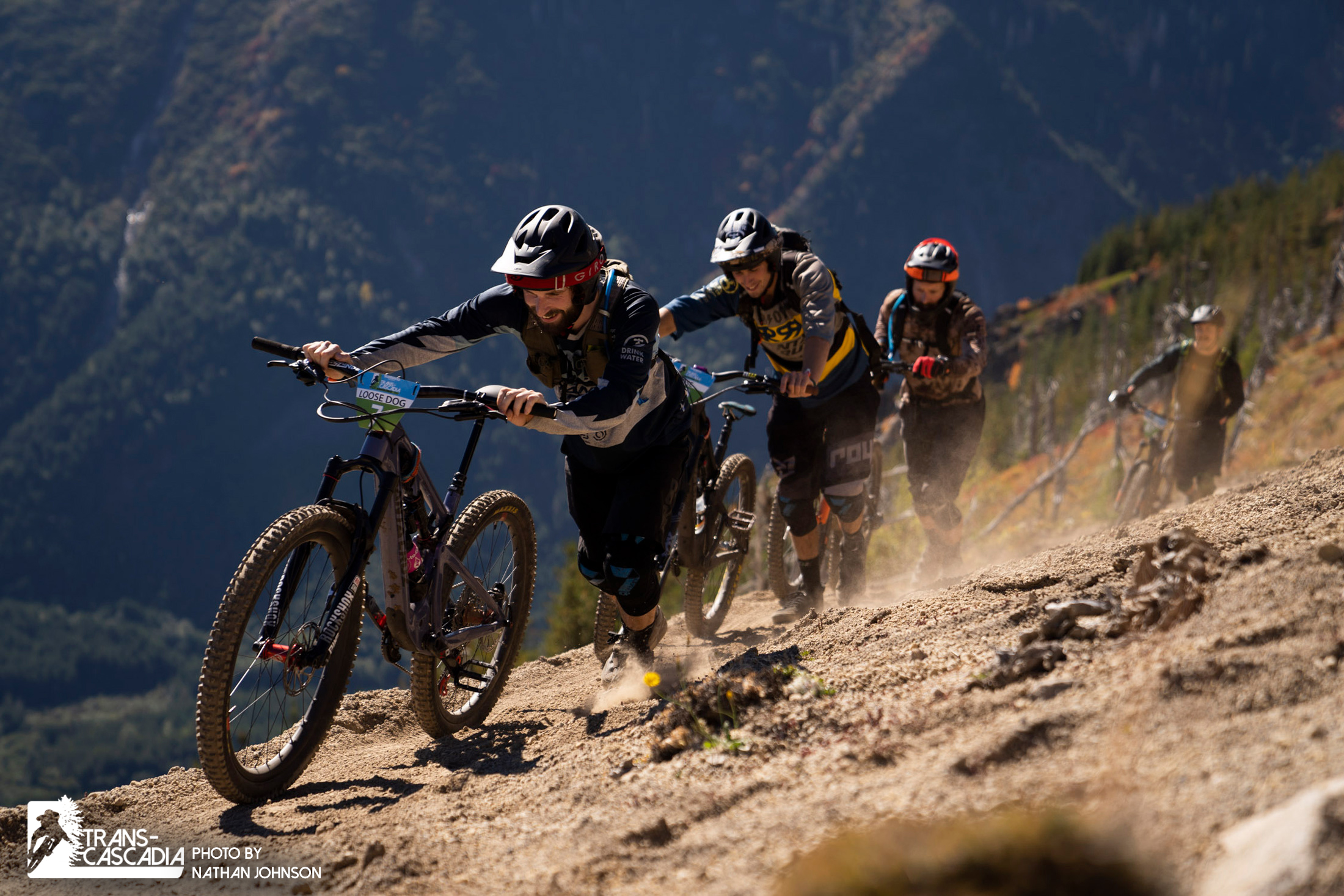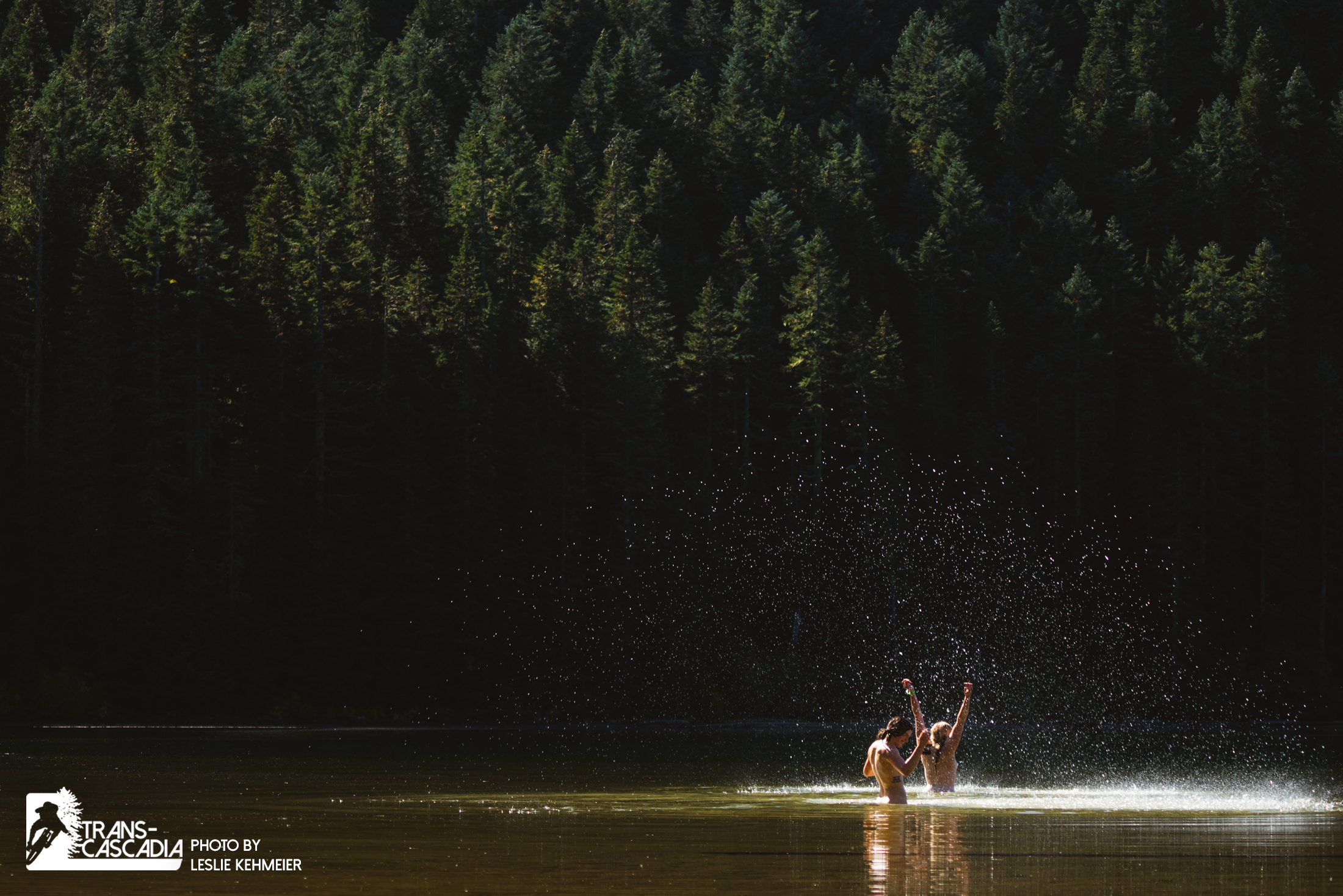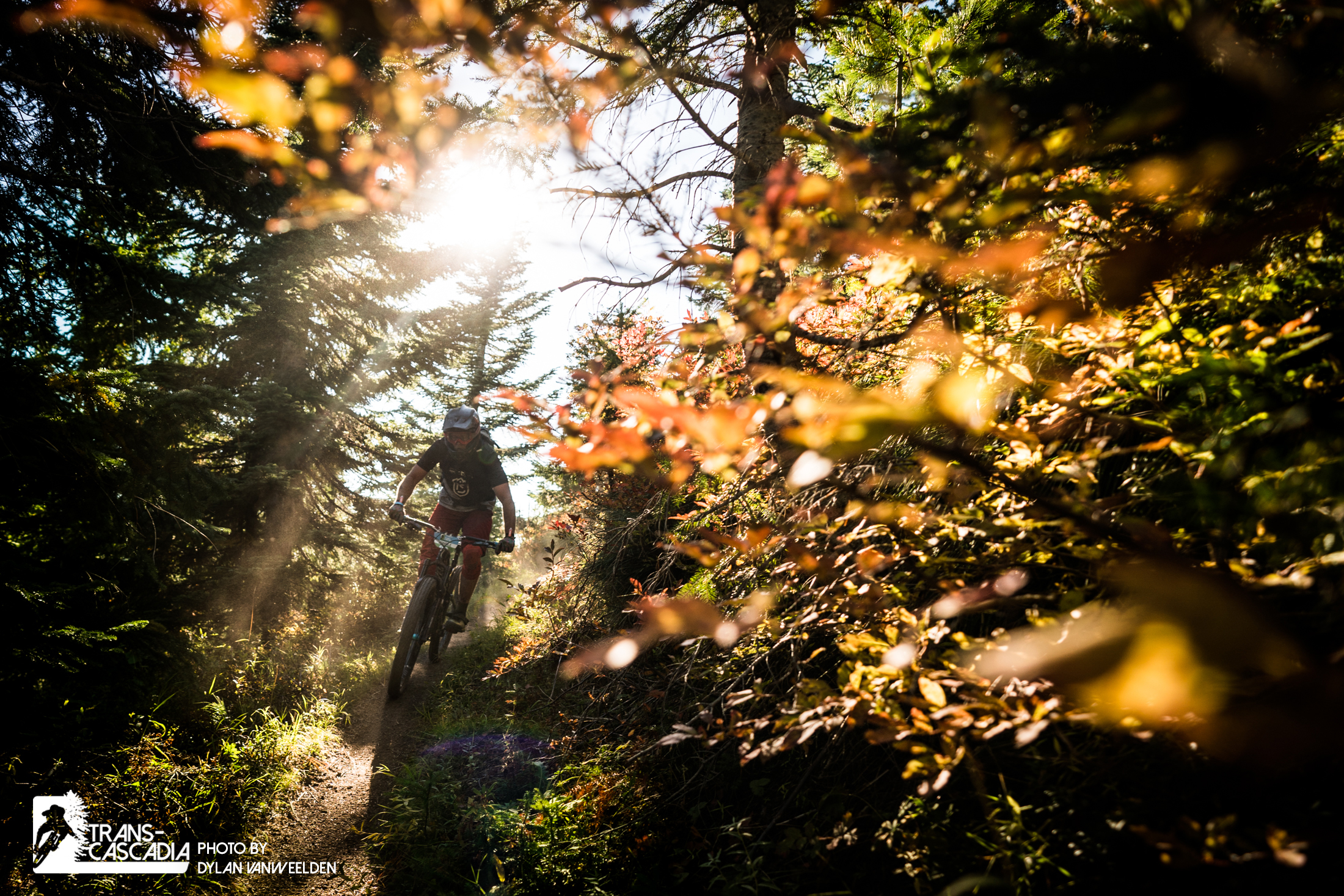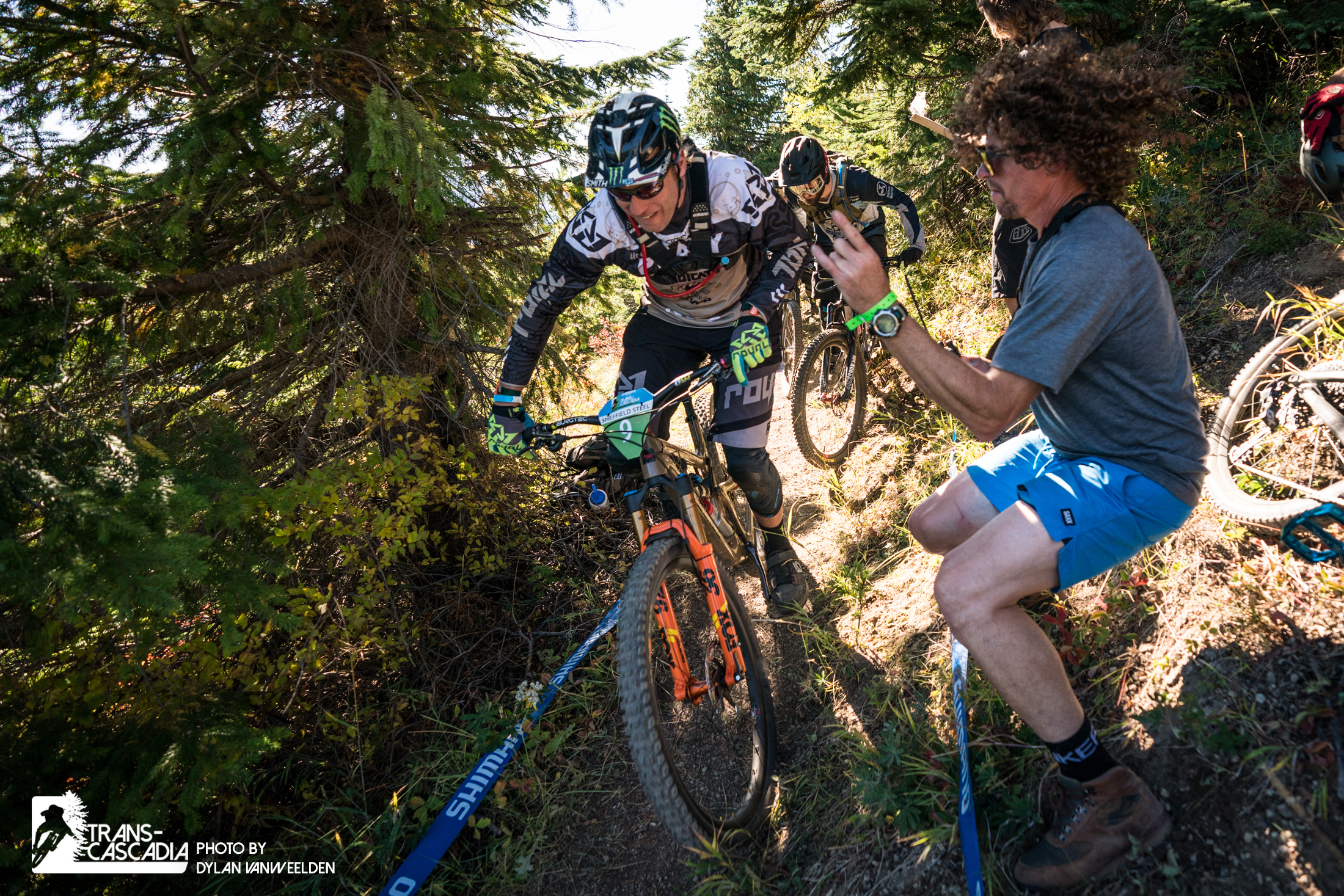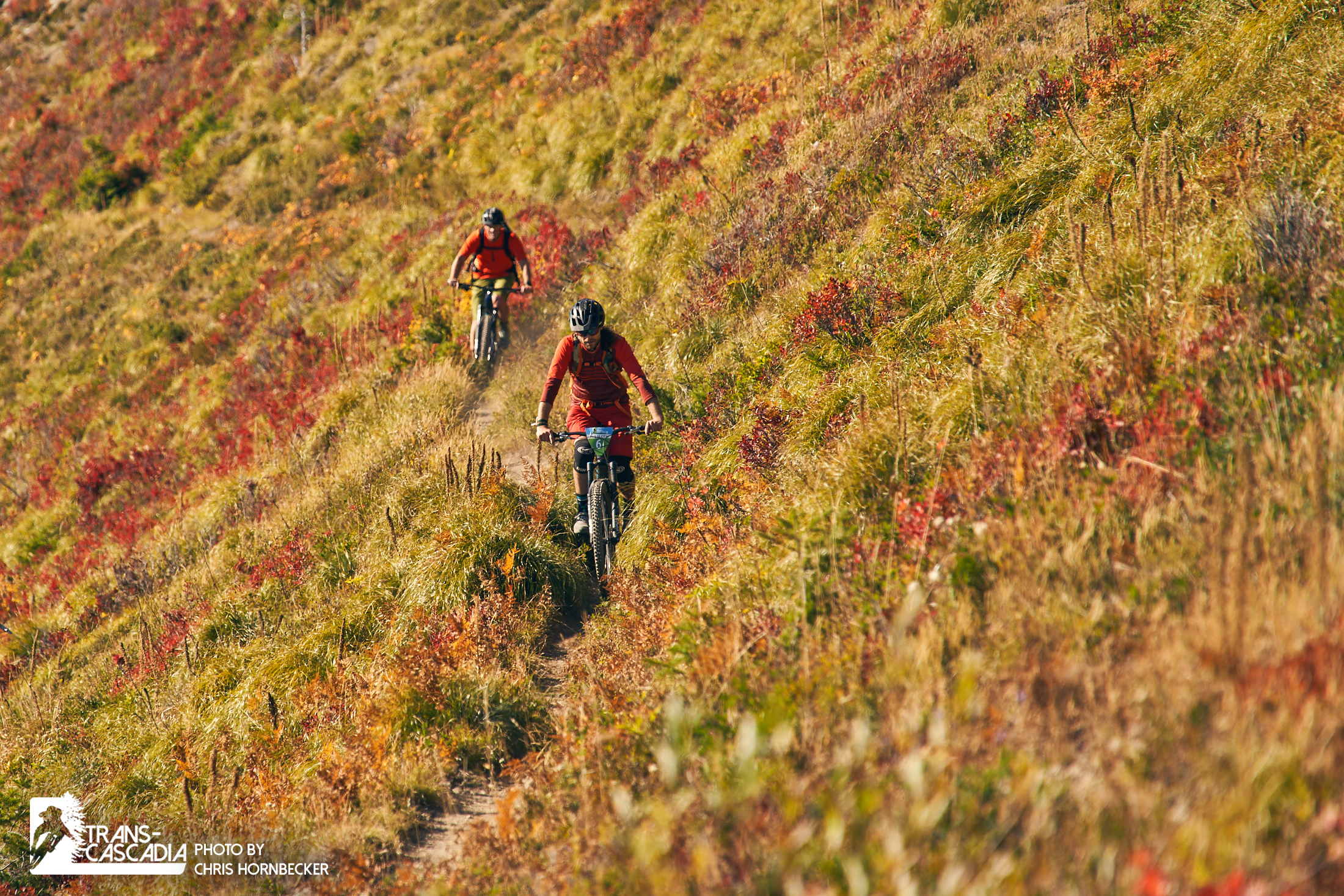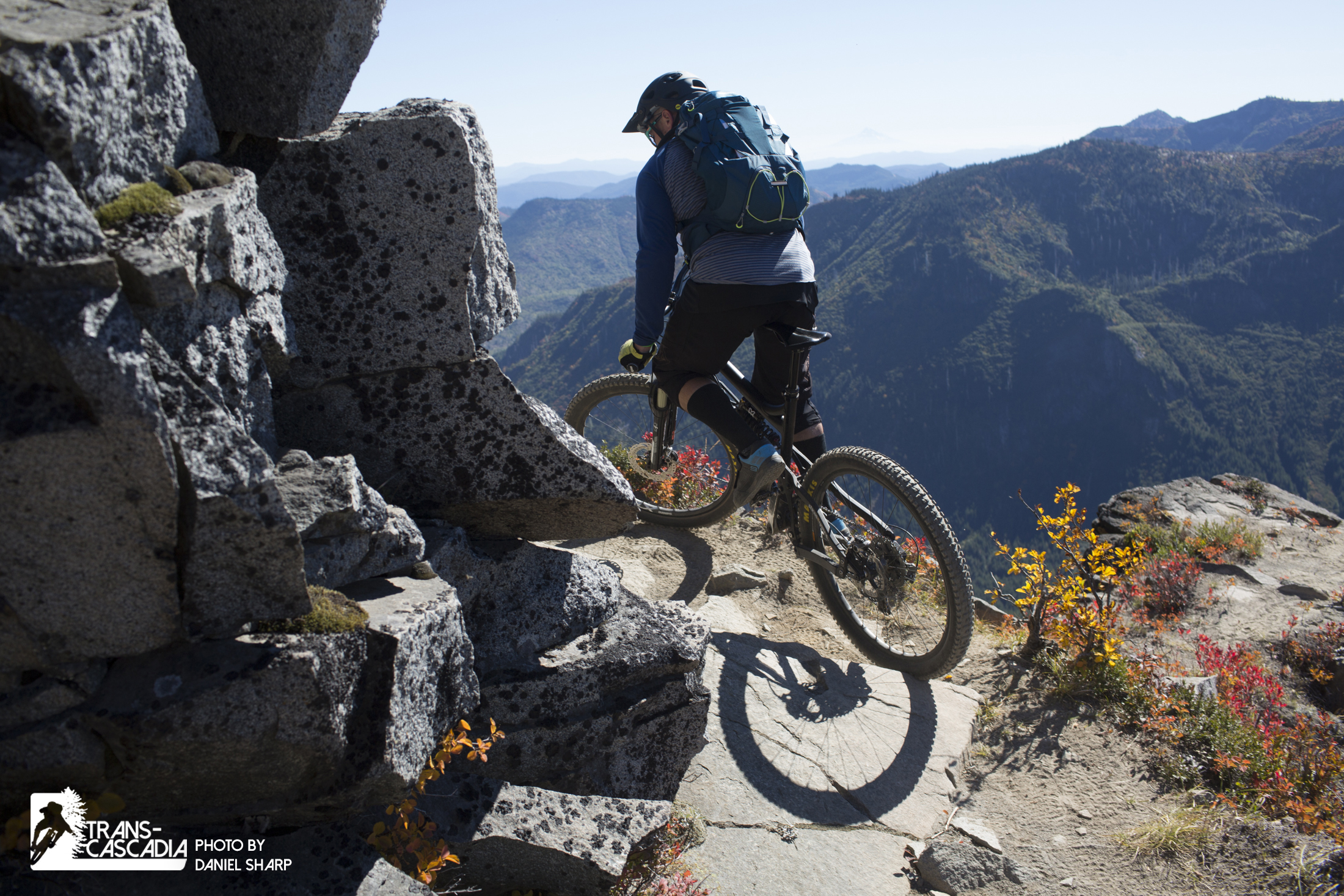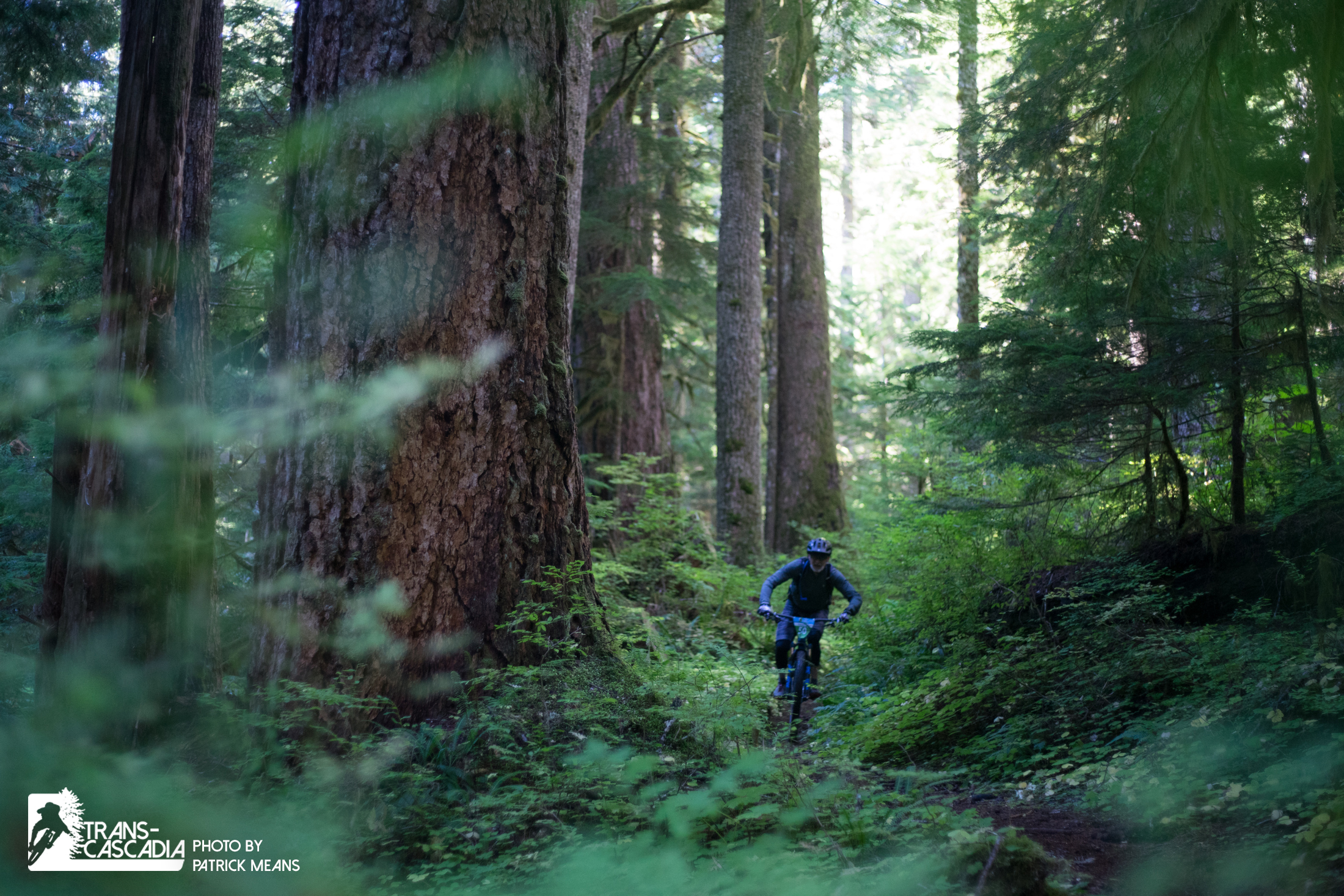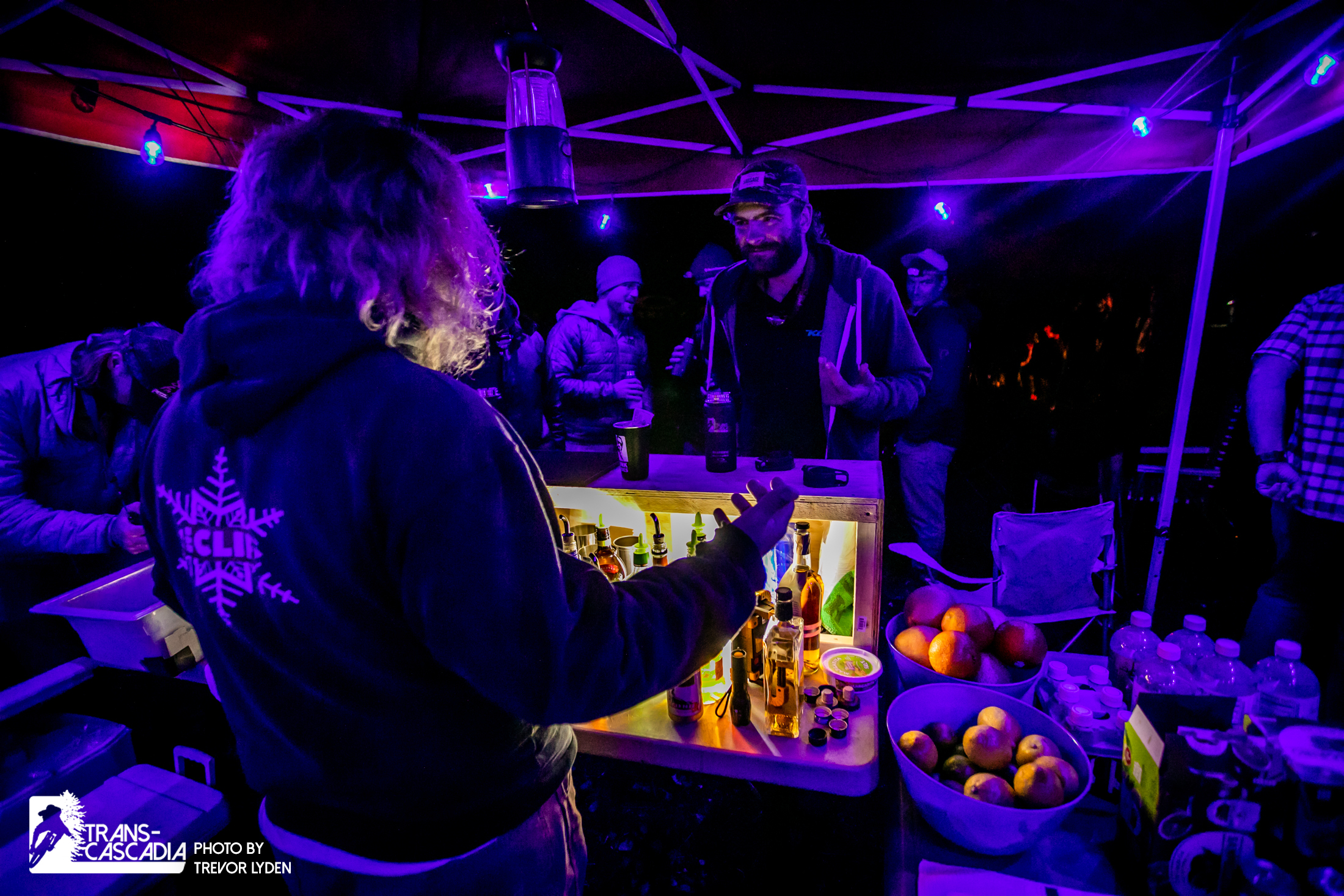2018 // Day 1 – The Deepest We’ve Ever Been
“Welcome to the fourth generation of Trans-Cascadia and I mean that, this is like a generational thing, this thing gets weirder every year.”
- Nick Gibson, Race Director
Welcome
“It’s been quite a journey to be in this zone. This is the deepest we’ve ever been,” Alex Gardner, Trans-Cascadia Producer, kicked off the racer welcome on Wednesday night. The crowd of returning and fresh faces were gathered together under a large tent around the tables where they had just finished a gourmet meal prepared by Executive Chef Chris DiMinno and provided by Chris King. “We are so excited to share this product with you guys,” continued Race Director, Nick Gibson. “We’ve been out here all summer grinding – how many of you came out and worked with us this year?” Half the crowd of nearly 200 racers and crew erupted with cheers and applause to signify their involvement. “A lot of people here were out digging and cutting and brushing trails. It was a huge project and we couldn’t do it without the community. It’s the community’s race – and that’s pretty sweet.”
This year’s basecamp is in the heart of the Gifford Pinchot National Forest and the blast zone for the 1980 Mount St. Helens eruption. The long and winding – sometimes eroding – access road took racers through views of the volcano and the remnants of its destruction that is still evident today as they arrived. “There are so many layers to this forest,” Nick Gibson explained to the crowd. “It’s pretty unique. Gifford Pinchot is the father of the United States Forest Service. He and Teddy Roosevelt created the Forest Service in the early 1900’s – and it was hotly contested. But, it paved the way for recreation and what we are able to do today – to come out here and ride trails. It’s a pretty incredible thing and something that we’ve thought about a lot while working out here.”
Despite being so remote, racers still have plenty of access to services with a WD-40 bike wash station, Shimano for tech support, Clif for nutritional support, and both Schwalbe and Oakley are onsite providing product to racers. There are massage and physiotherapist available and a full bar with a bartender, free-flowing beer and cocktails. The key gathering area is around the fire pit and its end-of-days-huge woodpile. Even hot showers and what have been described as ‘the nicest crappers ever to be used in the woods,’ are here. “Anything you need we are going to take care of it,” the Director of Logistic, Tommy Magrath, told the racers. “We are here for you. The only things racers need to pay attention to is when to eat, when to get on a shuttle [on days that have shuttles], and when to eat again. Coffee, breakfast, shuttle, dinner.”
Tommy wrapped up the Wednesday night meeting by summarizing the heart of Trans-Cascadia. “We are out here to open backcountry trails and we use this race to celebrate the opening of those trails, so you guys coming out here; racing it and hanging with us, are allowing us to do this year after year. So, thanks to everyone – racers, crew, media, volunteers – thank you!”
Despite the 5:30 am wake-up for most the next day, there were still plenty of people still around the bonfire at midnight. The bar was hopping, and a small dent was put in the massive wood pile while – without access to wifi – everyone got to know each other.
Day 1
Day 1 is a loop with no shuttle access. There are also no options to access the trails with resources and therefore, racers are required to carry a water filter and enough food to sustain themselves for what was expected to be on average an 8-hour ride.
Racers began heading out on course at 7 am. Following a flowy section of trail along the river, they pedaled through a stunning old growth forest before beginning a 30-mile climb with a 7,000-foot elevation gain. Roughly an hour-and-a-half up racers hit the peak and the start of Stage 1. “It’s a big dump all the way down to the bottom with one neutral zone in it about a third from the top,” described Nick at the racer meeting. A neutral zone is an untimed section; however, the etiquette is to keep moving within them. There were five creek crossings that were live during this stage; three were ridable, two were not.
Aaron Bradford won the first edition of Trans-Cascadia and has become a staple of both the pro men’s category and the basecamp culture here. Sitting fireside, he describes Stage 1, “after an hour or so of climbing we earned quite the delight. It was wide open and fast, and the dirt was just insane. Someone went through there with a rake, one of those metal super fine ones and it looked like one of those Japanese gardens with the perfect lines with the bends around the rocks and everything. It was absolutely glorious. And then it went into this lush lower half along the river that was really raw. Your sight zones went from 40 feet to maybe 8 to 10 feet. It wasn’t much. That being said, the dirt was good – really awesome through there. It was a little fern valley.”
Once racers hit the bottom of Stage 1, they started another big climb and made their way around the east side of a ridge where there were two short stages. Stage 2 was a spicy, fun, and flowy mile with 700 feet of descending. Unfortunately, this stage saw Sam Schultz crash – and while he is okay – he is out of the race. Chris Johnston was at the bottom of the stage when they got the news about Sam. “We all held back and there were guys who went up to help – we just hung out until we had a firmer idea of what the first responders were going to do and if they would need more help before we carried on. I think it’s an amazing community. After that, we bunched up and it was a good vibe and a good crew to ride with.”
Stage 3 was just under a half mile with 500 feet of descending. At the bottom of Stage 3 racers had the option for a 5-minute pedal to a swimming lake. While everyone agreed that the view was well worth the detour, very few braved the waters for a dip.
The start of Stage 4 was approximately a 30-minute climb back up to a saddle where racers took in views of Mount Rainier and the valley. Following the ridgeline to the last descent, they dropped in and rode 2,000 feet back to basecamp. “[Stage 4 was] ridiculous,” says Josh ‘Ratboy’ Lewis. “I followed Loose Dog and I’ve never seen him ride so fast, it was quite the sight to watch, it was nuts!”
This is Ratboy’s first time at Trans-Cascadia and he says he had no idea what to expect. “I imagined it completely differently actually, but what a pleasant surprise. It was so dreamy. I brought a short travel bike, so I was worried that I would be under biked, but it was perfect – it was just dreamy conditions.”
Geoff Kabush would take the lead after Day 1 with Peter Ostroski and Francois Bailly-Maitre in second and third place. Geoff has competed in each edition of Trans-Cascadia and has won the overall pro men’s category for the last two years. “The best part is exploring new trails. It was super fun riding around Oakridge the last few years because I’ve never really ridden in that area much before the race. And I really enjoy riding the trails blind so it’s cool to come here and explore everything that’s 100% new.”
In the Women’s category, Emily Slaco – who is experiencing Trans-Cascadia for the first time – took the top step, with Kim Hardin and Bekah Rottenberg in second and third place. “I don’t think I had any expectations coming into the race,” says Emily. “Stage 1 was good for shaking out the cobwebs and figuring out what the trails and dirt are like. It was super fun and it was nice to have the neutral in the middle as well. I’ve never had a race with a neutral section before – it was awesome! Stage 4 was so fast and straight down. We had a break at the top of the stage and the views on the ridge were stunning. Hanging out with everyone was fun – the crew made it fun, it was a good time.”
Overall, racers agreed the effort of the day was worth the rewards. “I had no clue what to expect,” says Luca Shaw, “but it was awesome. Definitely the longest ride I’ve done just on trails. We were on trails for five hours plus – that was cool. Such amazing views and the tracks were so much fun. It’s cool to ride this kind of terrain. It’s pretty much untouched and a rare opportunity – just had an awesome day on the bike! I loved it.”
Chef Rick Gencarelli from Lardo in Portland was behind the action for the Day 1 dinner. “[We are serving] smoked duck burritos. We are doing grilled chicken thighs and we are doing grilled skirt steak as well. The idea is that we have all these different meats and we have rice, beans, and guacamole. It’s nothing crazy but everything is fresh and delicious. I think it’s a great post-ride meal.” This followed a snack of fries covered with parmesan cheese, hot peppers, pork belly, and more.
As racers finished up their burritos-of-epic-proportions they listened to what Day 2 has in store for them. There may have been a collective sigh of relief when the word ‘shuttle’ was mentioned. In any case, they were still all smiles from the day – even if they were exhausted, as they slowly drifted off to their tents, one-by-one, from around the campfire.
Day 1 - Race Results
Day 1 Pro Women
1st : Emily Slaco
2nd : Kim Hardin
3rd : Bekah Rottenberg
Day 1 Pro Men
1st : Geoff Kabush
2nd : Peter Ostroski
3rd : Francois Bailly-Maitre



